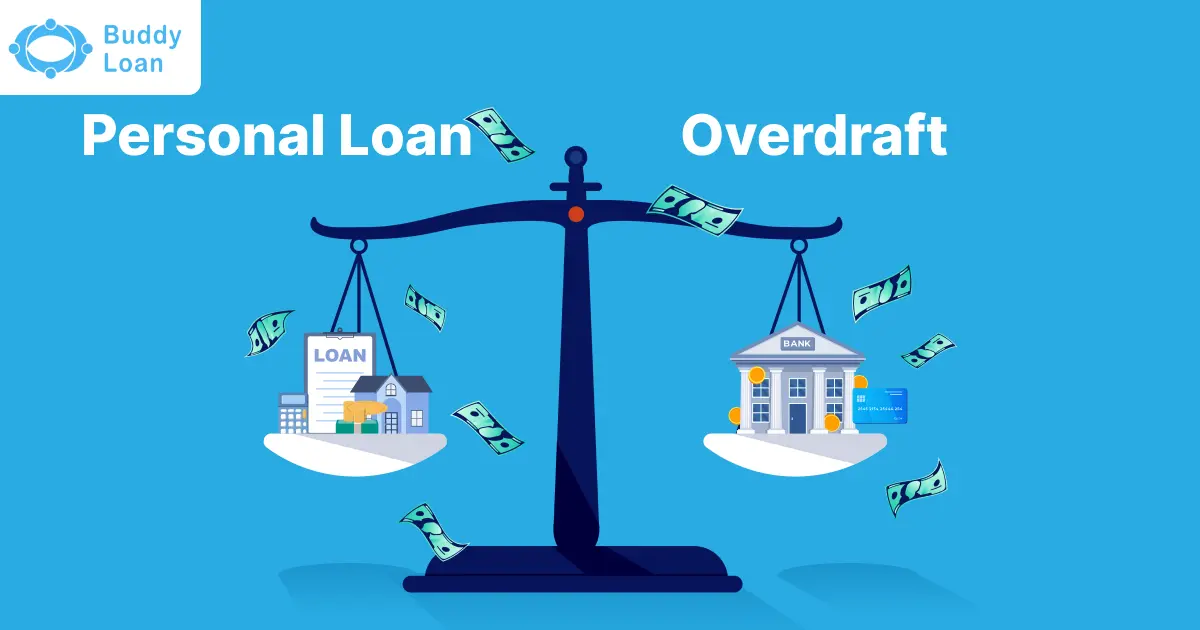“If you want to learn more about personal loans, both from Public Vs Private Sector Banks, you’ve come to the perfect place. Continue reading to learn more about personal loan eligibility as well as personal loan interest rates offered by various financial institutions. This article will provide you with all the necessary information about public and private sector banks, and you will also get to know about the current scenario of the industry in India.”
The state of the economy is reflected in the form of the banking system. The strength and efficiency of an economy’s financial system are dependent on a sound and solvent banking system, which in turn depends on the power and efficiency of the economy. A solvent banking system ensures that the bank can meet its obligations to its depositors in the event of a financial crisis.
Let’s Compare Public and Private Sector Banks to get a Better Understanding of the Banks
Banking Systems And Procedures
Every bank must operate systematically to avoid disputes. A statement from the Reserve Bank of India noted that “systems and processes can be written under banking policy.” Because of this, the rules for each bank are different. However, some standards, guidelines, and practices should be uniform across all Indian banks. Transactions such as cheques, ATM withdrawals, and cash management are all examples. Since people often have difficulty following the bank’s procedures when claiming rejected or failed transactions. Some areas where the problems are fixed more quickly, and others take longer to resolve. Banks are following systems that are causing all of this.
Liability Comparison Between the Public and Private Sector Banks
The interest rate of savings account can vary from bank to bank, and there is a range of interest rates available for savings accounts. By comparison, the State Bank of India’s savings interest rate is higher than that of other banks; according to a study from the RBI, 2.25 to 2.75 per cent are private sector banks’ interest rates. The interest rate on savings accounts has little effect on bank profitability. The Reserve Bank of India mandates that interest rates on savings accounts fluctuate every six months. All savings interest rates were lowered when the economy slowed down.
Also Read: Personal Loan Insurance Plans Protect Yourself From Different Risks
What are personal loans, and how they are processed?

Personal loans are becoming increasingly popular among consumers, especially for large-ticket expenses, and they are also transforming their purchases into equivalent monthly instalments (EMIs). Personal loans can aid families in addressing various financial gaps they might face. This includes buying a house or a car, funding their children’s higher education, or covering unexpected medical expenses, to name a few.
Personal loans are unsecured loans acquired by banks or non-banking financial corporations (NBFC) to suit their own unique requirements. It is based on various factors, including the borrower’s credit, job history, and ability to repay the loan.
Unlike a home or a car loan, a personal loan is not backed by any tangible property. Because it is unsecured and the borrower does not put up collateral such as gold or property to obtain it, the lender is unable to auction off anything you own in the event of a default. Personal loans have higher interest rates than home, automobile, or gold loans because of the perceived risk involved in approving the loans. However, as with any other loan, defaulting on a personal loan has its own set of negative consequences, such as damaging your credit rating and making it difficult to get a new credit card or loan in the future.
Loans And Their Process Mechanism in Public and Private Sector Banks:
The current lending scenario relies solely on the customer’s previous credit transactions. However, you can now get a Personal Loan and the personal loan interest rates much more quickly, thanks to the rapid adoption of technology in the financial sector. Personal loans are available from online lenders such as HDFC, ICICI Bank, Finance Buddha, and others, who accept applications through their websites. You can apply for a personal loan by completing an online application with the required details. Within an hour of applying, you will receive an e-approval for your loan.
Let’s look at an example. When someone applies for a personal loan or eligibility criteria, the bank performs due diligence before requesting supporting documentation. You will be asked to submit your KYC documents by the lender once they have received your application.
Lenders require KYC Documents to verify the applicant’s identity, age, address, and income.
Once the lender has received all of your supporting documentation, the verification process for your loan can begin. The lender will run a credit report on you based on the information you’ve provided, and they will verify your documents if your credit score meets their standards.
Your identity and the address listed on your loan application form are the primary verification points.
A second step is for the lender to confirm your employment and income by checking your place of work and your bank account information.
The loan agreement is drawn up for you by the lender in this step. This includes the terms and conditions of your loan, as well as the interest rate and length of your loan term. E-sign these documents if you agree with all of them and want the final disbursement from your lender. You’ll receive your loan money within minutes of completing this process.
Documents Required for Applying for a Personal Loan in the Case of Salaried Applicants:
1. An application form with a photo
2. Identification and address verification
3. Last six months’ bank account statement
4. The most recent salary payslip.
5. Form 16

Documents Required for Applying for a Personal Loan in the Case of Self-Employed Applicants:
1. An application form with a photo
2. Identification and address verification
3. Last six months’ bank account statement
4. Business proof
5. A company profile
6. Income tax returns (personal and business) for the previous three years
7. Last three years’ profit/loss statements and balance sheets
Interest Rate Comparison:
Public sector banks’ deposit interest rates are nearly identical to those offered by private sector banks. However, new-age banks like Bandhan Bank and Airtel Bank offer slightly better interest rates than their rivals.
What are the Current Interest Rates for Personal Loans? Let’s Check Rates From Banks and Mortgage Lenders
| Institution | Loan Amount(Under Rs. 30 Lakh) | Loan amount(Under Rs. 30 to 75 lakhs) | Loan Amount(Under Rs. 75 lakhs plus) |
| BANKS (Floating rates) | |||
| Axis Bank | 6.75-7.20 | 6.75-7.20 | 6.75-7.20 |
| Bank of Baroda | 6.5-7.85 | 6.5-7.85 | 6.5-7.85 |
| Bank of India | 6.50-8.35 | 6.50-8.35 | 6.50-8.35 |
| Bank of Maharashtra | 6.80-7.95 | 6.80-8.45 | 6.80-8.45 |
| Canara Bank | 6.9-8.9 | 6.9-8.9 | 6.9-8.9 |
| Central Bank | 6.85-7.30 | 6.85-7.30 | 6.85-7.30 |
| DBS Bank | <=7.7 | <=7.7 | <=7.7 |
| Federal Bank | 7.65- 7.70 | 7.65- 7.75 | 7.70- 7.80 |
| HDFC Bank | 6.75-7.50 | 6.75-7.75 | 7.00-7.85 |
| ICICI Bank | 6.70-7.30 | 6.70-7.45 | 6.70-7.55 |
| Indian Bank | 6.80-7.2 | 6.80-7.2 | 6.80-7.0 |
| IOB | 7.05 | 7.05-7.15 | 7.15-7.3 |
| IDBI Bank | 6.75-9.90 | 6.75-9.90 | 6.75-9.90 |
| J&K Bank | 7.2-7.3 | 7.2-7.3 | 7.3-7.6 |
| Karnataka Bank | 7.5-8.75 | 7.5-8.75 | 7.5-8.85 |
| Karur Vysya Bank | 7.15-9.35 | 7.15-9.35 | 7.15-9.35 |
| Kotak Mahindra Bank | 6.55-7.10 | 6.55-7.10 | 6.55-7.10 |
| Punjab National Bank | 6.55-7.8 | 6.5-7.8 | 6.5-7.45 |
| Punjab & Sind Bank^ | 6.4-7.35 | 6.4-7.35 | 6.4-7.35 |
| State Bank of India | 6.70 – 7.15 | 6.70 – 6.90 | 6.70 – 6.90 |
| South Indian Bank | 7.25-10 | 7.25-10 | 7.25-10 |
| Tamilnad Mercantile Bank | 8.25 | 8.25 | 8.25 |
| UCO Bank | 6.50-6.70 | 6.50-6.70 | 6.50-6.70 |
| Union Bank of India | 6.4-7.35 | 6.4-7.4 | 6.4-7.4 |
| BANKS (Fixed rates) | BANKS (Fixed rates) | BANKS (Fixed rates) | BANKS (Fixed rates) |
| Axis Bank | 12 | 12 | 12 |
| HDFC Bank | 7.40-7.95 | 7.40-8.10 | 7.55-8.20 |
| IDBI bank | 9.85-10.10 | 9.85-10.10 | 9.85-10.10 |
| Union Bank of India | 11.4 | 11.4-12.4 | 12.4-12.65 |
| HOUSING FINANCE COMPANIES (Floating rates) | HOUSING FINANCE COMPANIES (Floating rates) | HOUSING FINANCE COMPANIES (Floating rates) | HOUSING FINANCE COMPANIES (Floating rates)Floating Rates: |
| Floating Rates: | |||
| Tata Capital | >=6.7 | >=6.7 | >=6.7 |
| PNB Housing | 7.20- 8.75 | 7.20- 8.90 | 7.40- 8.90 |
| Central Bank Housing | 9.95-11.15 | 9.95-11.15 | 9.95-11.15 |
| HDFC Ltd | 6.70-7.65 | 6.70-7.90 | 6.70-8.0 |
| Indiabulls Housing Fin | >=8.65 | >=8.65 | >=8.65 |
| Aditya Birla Housing Fin | 9-12.5 | 9-12.5 | 9-12.5 |
| Bajaj Finserv | 6.70-14.00 | 6.70-14.00 | 6.70-14.00 |
| GIC Housing Finance Ltd | >=7.90 | >=7.90 | >=7.90 |
| Reliance Home Finance | 9.75-13 | 9.75-13 | 9.75-11 |
| Sundaram Home Finance Ltd | >=7.85 | >=7.85 | >=7.85 |
| Piramal Capital & Housing Finance | 10.5 | 10.5 | 10.5 |
| LIC Housing Finance Ltd | 6.66-7.60 | 6.66-7.80 | 6.9-7.90 |
| HOUSING FINANCE COMPANIES (Fixed rates) | HOUSING FINANCE COMPANIES (Fixed rates) | HOUSING FINANCE COMPANIES (Fixed rates) | HOUSING FINANCE COMPANIES (Fixed rates) |
| HDFC Ltd | 7.40-8.10 | 7.40-8.25 | 7.55-8.35 |
| LIC Housing Finance Ltd | 10.05 | 10.05-10.15 | 6.70-7.55 |
The interest rates of both private and public sector banks are roughly the same in this regard.
Customer Focus Between Private and Public Sector Banks:

Public banks have a more extensive customer base in India than private banks because they have been in business for anger. A large part of this success can be attributed to the objectives set. The goal of public banks is to make banking available to everyone in the country.
A more significant customer base in rural areas has spurred public banks to expand their reach. Private banks enter only those areas where they believe they can profit. Because of this, private banks are more likely to operate in urban areas than rural ones.
Also Read: Stabilize Thrive Your Company With Personal Loans For Self Employed
Current Scenario of Private and Public Sector Banks:
Demand for corporate and retail loans has increased in India’s banking sector, particularly in the service, real estate, consumer durables, and agriculture-related sectors. Risk management in the Indian banking sector is now being taken more seriously. In India, the banking sector has already embraced the international agreement on banking regulation. With this decision, the Reserve Bank of India has created a comprehensive database of financial information that anyone can access. Deposits made under the Pradhan Mantri Jan Dhan Yojana are also soaring in the Indian banking sector. As part of efforts to improve the rural banking sector, efforts are being made to raise income levels.
Six Public Sector Banks in India were merged into four large banks on Wednesday, April 1, 2020, to make them more globally competitive. This was India’s largest public-sector banking merger to date. Clients of the merging banks, including their depositors, will now be treated as clients of the new banks.
There are seven central public sector banks (PSBs) and five smaller ones following the merger. In 2017, there were 27 PSBs. Since April 1, 2020, the country’s public sector bank count has decreased from 18 to 12.
The exercise took place during an outbreak of COVID-19, which has affected the entire country, giving it added significance. A 21-day lockdown has been instituted to stop the virus’s spread. According to experts, a merger may not be a smooth and seamless transition at this time.
Interest Rates and Their Downfall:
Interest rates are determined by two factors when looking at a bank’s interest rates from afar: a benchmark prime lending rate and the MCLR (Marginal Cost of Lending Rate). There is a significant distinction in that MCLR is the lowest interest rate at which banks are prohibited from making loans below this set rate. For years, banks would charge a fee for lending money at BPLR rates. However, the regulations based on this BPLR were not adhered to, so they have been changed to the base rate.
The Reserve Bank of India (RBI) has instructed financial institutions to set their interest rates based on their capital and revenue inflows and outflows. However, the base rate set by the RBI cannot be lower than this. As a result of the level of competition in the industry, interest rates here are comparable to those offered by the majority of other financial institutions. Most banks’ interest rates differ by only 0.25 to 1 percentage point, which public-sector has a massive impact on the bank’s revenue generation. The interest rates of both public and private sector banks are tied to the RBI’s base rate.
The banks are taking a huge financial hit because of the recession, economic slowdown due to trade wars, and pandemics. A few significant loans have even been cancelled. As a result, bank interest rates continue to fall each year. And some banks are raising interest rates on loans. However, some public and private sector banks can still manage their loan and deposit interest rates well.
Revenue generation through non-interest income:
Non-interest income is earned by banks and creditors mainly through fees such as deposit and transaction costs, NSF fees, annual fees, monthly account service charges, inactivity fees, check and deposit slip fees, etc. Penalty costs, such as late fees and over-the-limit fines, are imposed by credit card issuers. Financial institutions charge fees that produce non-interest income to boost revenue and ensure liquidity in the case of higher default rates.
Case study – how Personal loans are processed in the public and private sector banks
Public sector banks, loan scenario:
With a personal loan, you can get the money you need in a short period and in small amounts. Starting the unique loan application process, the bank will require proof of identity, proof of residence, and proof of income/ITR for the past three years from the borrower. The bank can decide whether or not to approve or reject the loan after reviewing the documents and conducting a CIBIL check. More than 800 is considered an excellent credit score by banks. Personal loans are typically unsecured and based on a consumer’s ability to repay the loan and commitment to the lender. When a borrower has personal loan eligibility, the personal loan application process can take up to three days to complete.
Personal loans are made in equal monthly installments over terms ranging from one to five years. As many banks as possible should be contacted by the borrower in order to obtain the best possible loan offer. If all else fails, she can apply for the most cost-effective personal loan available. Compared to secured personal loans, interest rates on unsecured loans are significantly higher.
Private sector banks, loan scenario:
Private sector banks operate under a completely different set of rules. The entire personal loan application process has been digitized, and the loan has been disbursed immediately. To complete the personal loan application, all the customer needs to do is provide the required documentation. Secured and unsecured loans are both available from private sector banks. Secured personal loan applications must be processed in the same way as those from public sector institutions. It will only take a day to complete the procedure. Direct deposit of the funds will be made to the borrower’s bank account. The processing of the personal loan application will not be delayed in this way.
The only drawback is that private sector banks charge higher individual loan interest rates. However, compared to public sector banks, ours moves much more quickly. The CIBIL score is used to determine eligibility for loans in this country. When it comes to default, private sector banks act in a way that public sector banks do not. It will take an entire recovery team to go after the non-performing asset or defaulted amount that the borrower has failed to payback. The recovery procedures don’t require any explanation. A common occurrence is a loan becoming a non-performing asset, as many clients find out the hard way. In recouping the loan amount, the banks are struggling to get off the debts scenario.
Also Read: Public Sector Banks in India
Conclusion
According to the findings of this study, banks performance has a long-term correlation with the economy’s growth. The profitability of banks aids growth. A common metric for gauging a bank’s profitability, return on assets, showed a statistically significant positive correlation with overall economic growth. There is a small lending capacity, irrespective of both public and private sector banks.
The government’s share of numerous banks has expanded dramatically due to the recent recapitalization. Surprisingly, domestic private participation in significant private sector banks is negligible. In a nutshell, India’s banking sector is primarily government-owned or foreign-owned. In the mere future, the RBI should take necessary steps to reduce the non-performing assets increase and banks’ continuous performance in profitability.
Download Personal Loan App
Get a loan instantly! Best Personal Loan App for your needs!!
Looking for an instant loan? Buddy Loan helps you get an instant loan from the best verified lenders. Download the Buddy Loan App from the Play Store or App Store and apply for a loan now!
Having any queries? Do reach us at info@buddyloan.com




